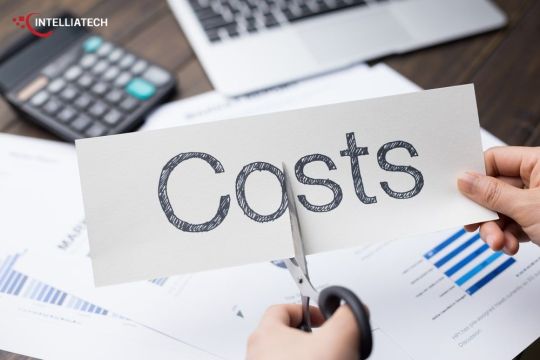#LeanStartups
Explore tagged Tumblr posts
Text
Scaling a remote team doesn’t mean scaling your tool count. TDZ Pro shows the power of saying no.
#MinimalistTech#BusinessFocus#RemoteWorkflows#TDZPro#LeanStartups#StartupFocus#TechStackTips#GrowthWithoutBloat
1 note
·
View note
Text
Generative AI for Startups in 2025: How to Innovate with Limited Resources
In 2025, Generative AI is no longer just a buzzword — it’s a practical tool driving growth for startups worldwide. From content generation and product design to customer service automation and code development, the potential is massive. But for startups operating with limited funds, teams, and infrastructure, the question remains: How can you leverage generative AI without breaking the bank?

Why Generative AI Is a Game Changer for Startups
Startups thrive on innovation and speed. Generative AI offers:
Cost-efficient creativity — AI-generated content, code, and designs save time and money.
Faster product development — AI tools can simulate product iterations and user experiences rapidly.
Personalized customer experiences — AI enables customized marketing and support, even with a small team.
Decision-making insights — AI-generated data models help founders make smarter, faster decisions.
In 2025, startups using GenAI tools report up to 40% faster time-to-market and 30% lower operational costs (source: industry reports).
Challenges Startups Face with GenAI
Despite the benefits, early-stage companies face several hurdles:
Limited budgets for infrastructure or enterprise AI platforms.
Lack of in-house AI expertise.
Privacy, compliance, and security concerns.
Overwhelming tool choices without clear ROI.
This is where smart partnerships and resourceful planning come into play.
5 Ways Startups Can Innovate with GenAI on a Budget
1. Use Open-Source & Freemium GenAI Tools
Platforms like Hugging Face, Google Colab, and OpenAI’s APIs offer powerful capabilities without large upfront costs. Startups can prototype, test, and scale later.
2. Automate Repetitive Tasks
Deploy GenAI for:
Social media captions
Basic UI mockups
Customer chat responses
Email marketing drafts
This reduces manual effort and allows your core team to focus on strategic goals.
3. Build AI into MVPs (Minimum Viable Products)
Instead of developing full-fledged AI systems, startups can integrate GenAI features like text generation, summarization, or visual creation to make MVPs stand out.
4. Focus on Niche Problems
Startups should solve focused, real-world issues where GenAI delivers clear value — like invoice processing for SMBs or AI tutors for specific learning disabilities.
5. Partner with AI-Driven Solution Providers
Companies like Tech4Biz Solutions offer custom AI integrations, MVP co-development, and advisory support — helping startups innovate faster without building from scratch.
Real-World Example: Startup X (Hypothetical Case)
Startup X, an edtech startup with only five employees, used generative AI to:
Automate lesson plan generation.
Build an AI chatbot for student Q&A.
Use AI voiceovers for explainer videos.
With just $5,000 in tools and support from Tech4Biz Solutions, they scaled to 10,000 users in 6 months without hiring a content or design team.
How Tech4Biz Solutions Supports Startups in the GenAI Era
At Tech4Biz Solutions, we specialize in helping startups harness generative AI without overextending their teams or budgets. Our services include:
Low-cost GenAI MVP development Custom AI model training for niche domains API integration and deployment Consulting on AI ethics, data privacy, and compliance
We understand startups need speed, flexibility, and impact — not bloated platforms or costly licenses.
Final Thoughts
Generative AI in 2025 offers a golden opportunity for startups to punch above their weight. With the right tools, mindset, and partners, you can build, test, and scale faster than ever — even with limited resources.
Don’t wait to build everything yourself. Start lean, automate smartly, and innovate boldly.
Want to explore how GenAI can fuel your startup’s journey? Contact Tech4Biz Solutions today and let’s build your next-gen idea together.
#GenerativeAI#tech4bizsolutions#AIForStartups#StartupInnovation#AIDrivenGrowth#LeanStartups#MVPDevelopment
0 notes
Text
youtube
#blog#selfmade#selfmadeceowade#blogging#josephis wade#IT#technology#innovation#buisness#prompt engineering#entrepreneur#viralpost#viral trends#viral-tech#techhacks#hacks#life hacks#hackerlife#data dump#deep dive#InfiniTec#josephiswade#Colorado#startup#seed stage#leanstartups#agile project management#Youtube
0 notes
Text

#lol#funny#women#names#joke#haha#jokes#come on#Eileen#joke of the day#dad jokes#bad jokes#dumb jokes#funny jokes#woman#right leaning#left leaning#one legged woman#come on eileen#lean body#one leg#lean muscle#get it?#hehe#leanstartups#one up#standing#fit woman#name#mature woman
1 note
·
View note
Text
The Amazon Effect: Unveiling the Impact of Selling on Amazon
#venturecapital#socialnetworking#leanstartups#branding#advertisingandmarketing#motivation#personaldevelopment#investing#jobinterviews#sustainability#personalbranding
0 notes
Text
Evalvue is here to revolutionize the way you manage your team's performance! Our innovative platform provides:
Real-time feedback and coaching
Data-driven insights for informed decisions
Personalized development plans for each employee
Seamless integration with your existing HR systems
By switching to Evalvue, you'll:
Boost employee engagement and motivation
Enhance leadership effectiveness
Drive business growth through data-informed decisions
#-#HRManagement#WorkforceSolutions#BusinessSuccess#EmployeeEngagement#ProductivityMatters#HRTech#DigitalTransformation#Innovation#Leadership#ManagementTips#HRInnovation#FutureOfWork#innovation rs#management#humanresources#digitalmarketing#technology#creativity#future#futurism#entrepreneurship#careers#markets#startups#marketing#socialmedia#venturecapital#socialnetworking#leanstartups
0 notes
Text
𝗖𝗼𝘀𝘁-𝗖𝘂𝘁𝘁𝗶𝗻𝗴 𝗧𝗶𝗽𝘀 𝗳𝗼𝗿 𝗦𝘁𝗮𝗿𝘁𝘂𝗽𝘀
Starting up a new venture can be both exciting and challenging. One such big challenge is managing finances and cutting costs. Here we have listed out a few ways through which startups can cut down their costs without compromising on efficiency and quality.

💰 Put technology to use and automate things. There are plenty of free resources available too which can help to a good extent. 💰Consider outsourcing non-core functions. This will save you from the hassle of hiring or training in-house staff. Taking help from freelancers can also significantly help. 💰Buy pre-owned equipment and electronics or lease them. An old model of the same equipment can always be found at lower prices. The same goes for any machinery or vehicle too. 💰Don’t be afraid to negotiate with suppliers and vendors. Negotiating can fetch you really good deals, thus saving a lot of money. 💰Choose digital marketing over traditional marketing as a cost-effective alternative. Make good use of platforms like LinkedIn.
1 note
·
View note
Link
On this page you can get diffrent poses of free printable Mirabel madrigal coloring pages in pdf format.
0 notes
Text
You don’t need more apps Just better ones.
2 notes
·
View notes
Text
Startups Are Prioritising UX First — And It’s Paying Off

In today’s fast-paced digital landscape, startups are shifting their focus from just building products to building experiences. The days of launching half-baked MVPs and hoping users will figure it out are fading fast. Across Mumbai and global innovation hubs, UX (User Experience) is becoming the cornerstone of product development from day one.
Startups that invest in intuitive interfaces, fast load times, mobile responsiveness, and clear user journeys are seeing higher retention and better feedback in early stages. UX isn't just about design anymore—it’s a product strategy.
This shift is especially visible in MVPs being launched in sectors like edtech, fintech, and D2C, where first impressions can make or break user trust. Founders are bringing in UX designers at the ideation stage, conducting user testing before a single line of code is written, and tracking interaction data from the first click. And the results speak for themselves: faster growth, lower churn, and easier fundraising.
Want proof? Just look at the increasing VC interest in startups that showcase UX excellence. Investors know that if users love the product, revenue and scale will follow.
At Intellitron Genesis, we work with founders to structure their digital foundation with UX at the core—not as an afterthought. Because the most successful products are not just usable, they’re lovable.
Explore More Insights: → All Blog Posts → Read Full Article: Startups Are Prioritising UX First — And It’s Paying Off
#UXDesign#StartupGrowth#MVPStrategy#ProductDesign#UserExperience#MumbaiStartups#StartupTips#DigitalStrategy#FoundersLife#ProductDevelopment#UIUX#LeanStartup#EarlyStageStartups#StartupIndia#TechStartups#Ask ChatGPT
0 notes
Text
How to Choose the Right MVP Development Company for Your Startup
Struggling to choose the right MVP development company? Discover key factors like technical expertise, agile process, cost, and startup experience that help you pick the perfect partner for faster launch and scalable growth.
#MVPDevelopment#StartupSuccess#ProductDevelopment#AgileDevelopment#TechPartner#StartupGrowth#MVPCompany#LeanStartup#BuildMeasureLearn#MVPServices
0 notes
Text
Is Smaller Smarter? How Vertical SaaS & Micro-SaaS Are Dominating 2025’s Software Landscape
Why are niche-focused software products outperforming the giants in 2025? Discover how Vertical SaaS and Micro-SaaS models are redefining customer value, retention, and growth—by going deeper, not broader.
#MicroSaaS#VerticalSaaS#NicheMarkets#SaaSStrategy#StartupGrowth#SaaS2025#LeanStartup#ProductMarketFit
0 notes
Text
Gurgaon Virtual Offices: How MNCs and Startups Are Cutting Costs Without Compromising Quality

Gurgaon, one of India’s most dynamic business hubs, is undergoing a significant transformation in how workspaces are utilized. With commercial rents soaring and remote work becoming standard practice, both multinational corporations (MNCs) and startups are finding smarter alternatives to traditional leasing. The rise of the virtual office in Gurgaon has paved the way for companies to operate legally, flexibly, and efficiently — all without the heavy expenses.
In this blog, we explore how virtual offices are helping companies in Gurgaon reduce costs while maintaining professionalism and compliance.
1. The Changing Business Landscape in Gurgaon
Gurgaon is home to global corporations, unicorn startups, and rapidly growing SMEs. But with evolving work models and economic caution, companies are seeking flexible infrastructure that doesn’t compromise on quality. Virtual offices offer exactly that.
2. Why Virtual Offices Appeal to MNCs
Multinational companies often operate satellite teams or representative offices in Gurgaon. A virtual office allows them to:
Maintain a local presence
Comply with regulatory and tax requirements
Avoid committing to long-term leases or setting up an entire office
3. Startups Scaling Without Overhead
Early-stage startups use virtual offices in Gurgaon to:
Register their business and obtain GST
Use a premium address to enhance brand trust
Avoid investing in rent, furniture, or maintenance
This makes virtual offices ideal for scaling without financial strain.
4. Legal Validity and GST Compliance
A virtual office for GST registration in Gurgaon is fully compliant when supported by:
No Objection Certificate (NOC)
Rent Agreement
Recent Utility Bill
These documents are sufficient for:
MCA company registration
GST filings
ROC updates
5. Reduced Operational Costs
Companies save money across the board:
Zero lease commitments
No maintenance fees
No utilities or office supplies
Plans start from ₹999/month — allowing businesses to function without fixed infrastructure.
6. Flexibility in Workforce Deployment
With virtual offices, companies can keep core teams remote and use the office address only for:
Business communication
Legal documentation
Periodic client meetings or audits
7. Premium Address for Brand Reputation
Gurgaon sectors like Cyber Hub, Golf Course Road, and MG Road offer instant credibility. Using these addresses enhances:
Investor trust
Client confidence
B2B partnership approvals
8. Seamless Access to Meeting Rooms and Desks
Most virtual office solution in Gurgaon providers offer:
Bookable meeting rooms
Day-use workstations
Reception services
These ensure that occasional physical needs are met without permanent overhead.
9. Ideal for Hybrid Work Models
As hybrid models gain traction, companies need an address in the city but don’t want full-time space. Virtual offices bridge this by:
Supporting official presence
Offering part-time workspace access
Maintaining document compliance
10. Technology-Driven Management
Modern virtual office platforms provide:
Dashboards for mail alerts and bookings
E-document access (NOC, Rent Agreement, Utility Bill)
Instant updates for verification support
11. MNC Expansion Without Real Estate Risks
For global firms testing Indian markets:
Virtual offices offer a risk-free entry
Address legitimacy supports bank setup and hiring
No need for immediate physical expansion
12. Remote Startups with a Centralized Identity
Startups with distributed teams can still appear centralized by using a Gurgaon virtual office. This helps in:
Vendor approvals
Tax filing
Government documentation
13. Courier Handling and Document Management
Providers offer:
Mail and courier collection
Notifications on document delivery
Pickup or forwarding options
This keeps businesses efficient even when working from elsewhere.
14. Industry Use Cases
Popular sectors adopting virtual offices in Gurgaon:
FinTech and SaaS companies
EdTech and HealthTech
E-commerce sellers
Digital marketing and consulting agencies
15. Future of Virtual Offices in Gurgaon
The demand for virtual offices is expected to grow over 35% YoY. Companies are integrating them into long-term plans as:
Legal business headquarters
Compliance addresses
Scalable infrastructure options
#VirtualOfficeGurgaon#StartupIndia#MNCExpansion#GSTRegistration#RemoteWork#LeanStartup#VirtualOfficeSolution#BusinessEfficiency
0 notes
Text
Don't say you are experienced yet struggle to demonstrate it ...
I created the ENTREPRENEUR EXPERIENTIAL LEARNING CYCLE TEMPLATE, a self-coaching guide for entrepreneurs based on psychology and business concepts. DOWNLOAD IT HERE.

#Entrepreneur#StartupLife#BusinessGrowth#Leadership#LeanStartup#BusinessStrategy#Founder#Solopreneur#BusinessCoach#LearnFromFailure#ScaleSmart#SystemsThinking#TumblrBusiness
0 notes
Text
We’re not anti-tech. We’re anti-waste. TDZ Pro runs lean so we can grow.
1 note
·
View note
Text
youtube
Hr management system
#-#HRManagement#WorkforceSolutions#BusinessSuccess#EmployeeEngagement#ProductivityMatters#HRTech#DigitalTransformation#Innovation#Leadership#ManagementTips#HRInnovation#FutureOfWork#innovation rs#management#humanresources#digitalmarketing#technology#creativity#future#futurism#entrepreneurship#careers#markets#startups#marketing#socialmedia#venturecapital#socialnetworking#leanstartups
0 notes